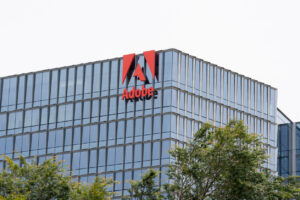How to prioritize internal comms during natural disasters – with or without your intranet
Recent hurricanes underscore why communication contingencies are key.

Over the past month, the United States has seen not one, but two generational storms strike the South, leaving devastation in their wake. With lives lost, normalcy upended, and many people in need of assistance, it’s as good a time to reflect upon how we as communicators prepare for and talk about these natural disasters.
Last week, we ran a piece outlining how communicators can step up for their employees after natural disasters. But for all the meaningful things organizations can do after a disaster, including employee assistance and support services, it’s still worth examining how comms pros reach their employee base during these tough times. The tactics and tools you use to connect with employees aren’t just critical to checking in on their safety in the immediate wake of a disaster. They also lay the groundwork to create a culture of caring and concern.
Customizing intranet comms for disaster prep
A functioning intranet should be much more than just a repository for company holidays and reminders to sign up for healthcare. Ahead of, during and after a disaster, it should also include tangible resources that employees can access, such as employee assistance program information, disaster and emergency services contacts, and any internal on-the-ground recovery information.
Ashley Bush, director of communications and giving back at Southwire, spoke of her recent experiences with disaster communications and response. As a cable and wire manufacturer based in the American South, Southwire dealt directly with Hurricane Helene’s fury.
The company’s intranet platform, “Southwire Circuit”, runs on a mobile app for ease of use. It’s integrated with the company’s HR information system to streamline and simplify access during disasters.
“It gives us a timely way to reach people transparently and meaningfully,” Bush said. “Additionally, the information available to them is customized based on what their role is and where they’re located.”
Southwire’s disaster response plan came before Helene ever made landfall. The company used its intranet to customize communication for vulnerable locations in the storm’s path to provide employees with the proper procedures and safety measures.
“The first thing we did was share some generalized storm safety measures around to ensure that everyone was protecting themselves and their families,” Bush said. The next step implemented a multichannel approach to let employees know the pathways of communication in the organization if a job site was damaged or made inaccessible by the storm. This became important after Helene made landfall, as Southwire’s South Georgia operations laid in the crosshairs of the storm.
“We were able to go to the affected areas and spend time with our teams there,” explained Bush. “We worked with the local rapid response teams, who were great. But we also realized a lot of our teammates didn’t have power, which presented yet another comms challenge.”
Power outage contingencies and sharing stories of resilience
In an internet-dependent society like ours, it’s easy to forget how reliant we are on modern conveniences like electricity and internet access for normal communication practices. Helene put these to the test for people across the Southeast, with many people losing contact with loved ones for days at a time.
Bush said her team committed to maintaining an open, frequent line of communication with their affected teams on the ground that did have access to power, allowing for updates about those who had lost power and providing a channel for welcome news of their safety.
“We did a lot of company-wide response efforts to keep everyone aware of what was going on at our affected sites, particularly the one in Douglas, GA, which was in the direct line of the storm,” Bush explained. “Beyond just providing the news, we wanted to show our people that there were ways to help.”
Bush then leaned into the “giving back” part of her team and title, helping organize seven tractor-trailer loads of supplies for those in need in affected areas. Southwire Circuit proved invaluable when coordinating these relief efforts to provide needed assistance and show that the organization truly cared for its people.
“In a time in which everyone wanted to step up and do something, having this tool was so important not only to get this information out to people but also to allow them to engage and respond and interact,” Bush said. “Connection during these tough times is so necessary.”
Sean Devlin is an editor at Ragan Communications. In his spare time he enjoys Philly sports and hosting trivia.







